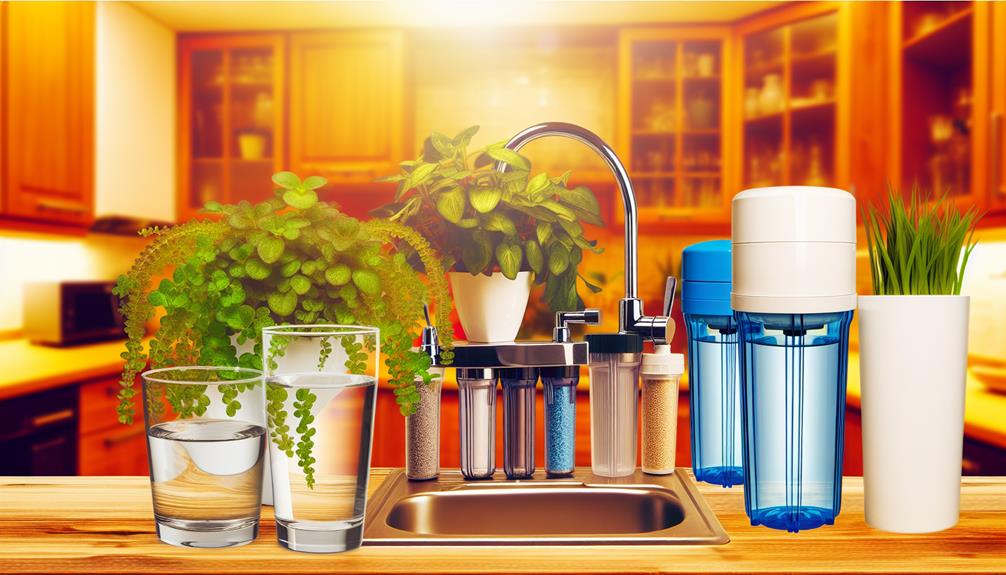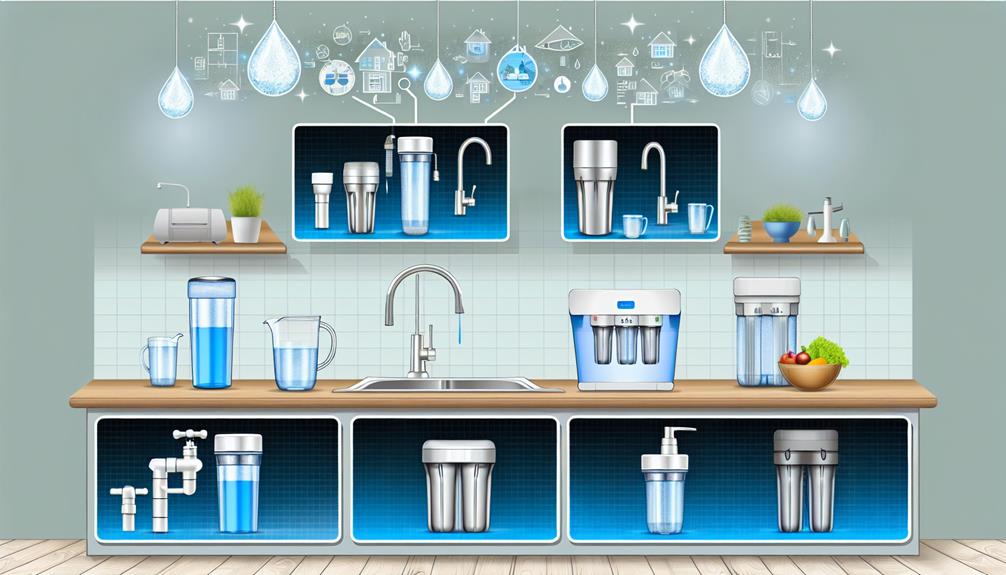When you research, evaluate, and compare water purifiers, you're not just making a purchase; you're investing in your health and the well-being of your loved ones.
As you navigate this vital decision, you must understand that not all purifiers are created equal and that the nuances in water quality demands and filtration technologies can be as varied as the number of products on the market.
You're tasked with considering not just the initial cost but also the long-term implications of maintenance, filter replacement, and energy consumption.
This intricate dance of variables isn't one to take lightly, and as you stand at the precipice of choosing a device that ensures your water is clean and safe, remember that the key to mastering this art lies in a deeper understanding of the hidden complexities that govern it.
What you may not realize is how these systems can affect more than just the taste and clarity of your water, and it's in these subtleties that your perfect match can be found.
Assessing Water Quality Needs
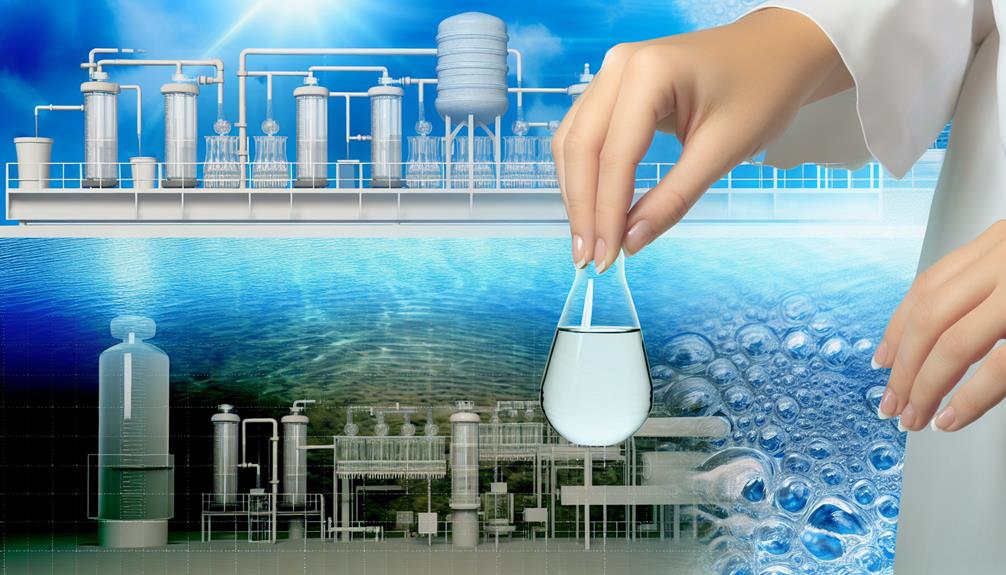
Before selecting a water purifier, you must first analyze your specific water quality needs by evaluating the contaminants present in your water supply. Understanding the contaminant sources is critical to determining the filtration technology that'll best suit your requirements. It's not just about removing harmful pathogens or chemicals; it's also about aligning with your taste preferences, ensuring the end result is both safe and palatable.
Start by collecting a water quality report from your local utility or conducting a home water test. This will provide you with a detailed breakdown of the contaminants you're dealing with, whether they're biological, like bacteria and viruses, or chemical, such as heavy metals, chlorine, or pesticides. Understanding these specifics is the cornerstone of a technical evaluation.
Next, consider the concentration levels of these contaminants. Different filtration systems—like activated carbon filters, reverse osmosis units, or ion exchange systems—are designed to target specific impurities with varying efficiencies. It's not a one-size-fits-all scenario. You'll need to match the filter's capabilities with the contaminants' particulars.
Lastly, don't overlook the taste preferences. Water's flavor can be significantly affected by certain minerals and chemicals. A purifier that enhances taste while removing impurities will serve you best, offering a comprehensive solution to your water quality needs.
Understanding Filtration Methods
Having established the contaminants and your water quality needs, it's crucial to examine the various filtration methods available to ensure you select the most effective system for your situation. Here's a breakdown of filtration methods distinguished by filter materials and their efficacy in contaminant removal:
- Mechanical Filtration
- Utilizes physical barriers
- *Sediment filters:* Capture particles like sand and silt
- *Ceramic filters:* Trap bacteria and protozoa through microscopic pores
- Adsorption
- Employs adsorbent materials
- *Activated carbon:* Binds and removes organic compounds, chlorine, and lead
- *Ion-exchange resin:* Targets heavy metals and softens water by replacing harmful ions with benign ones
- Biological and Chemical Processes
- Involves reactions or living organisms
- *UV treatment:* Destroys microbial DNA, rendering organisms inert
- *Reverse osmosis:* Forces water through a semipermeable membrane, stripping dissolved inorganics
Each method has specific advantages and limitations regarding contaminant removal. For instance, activated carbon is exceptional for organic compounds but may not effectively remove dissolved minerals. Conversely, reverse osmosis excels in minimizing salt and metal ions, yet it can be less efficient against volatile organic compounds or chlorine unless combined with carbon filters.
Careful selection based on technical analysis of filter materials and contaminant profiles ensures optimal water quality.
Comparing Purifier Capacities
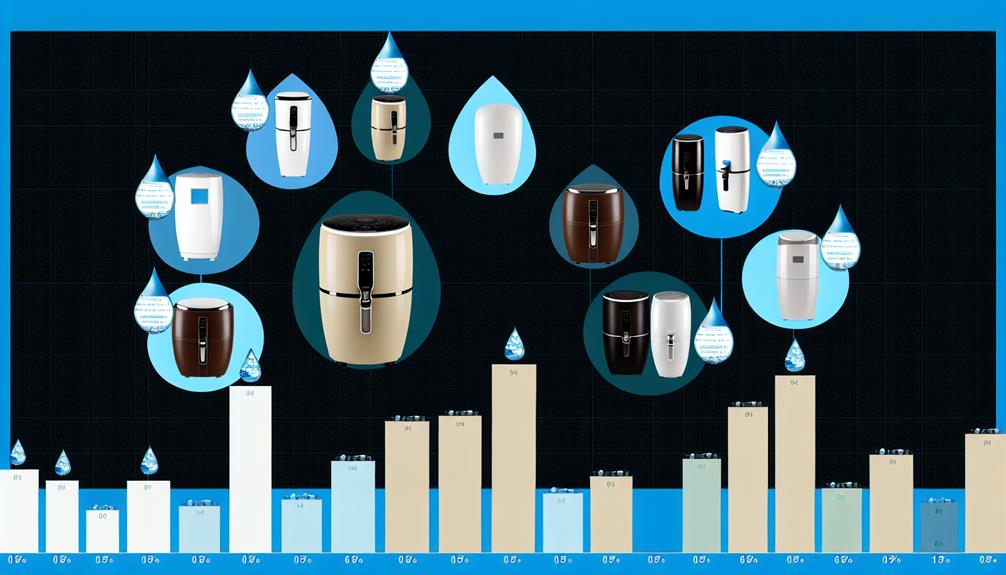
When selecting a water purifier, it's essential to compare the capacities of different systems, as they directly affect the volume of water that can be purified within a given timeframe and the longevity of the filter elements. You'll want to assess the filter lifespan, which varies widely between models. This is quantified by the number of gallons the filter can process before requiring replacement. High-capacity systems may have a longer lifespan, reducing maintenance frequency and potentially lowering long-term costs.
Moreover, you must consider the flow rate, typically measured in gallons per minute (GPM). A higher flow rate implies that more water is purified faster, which is crucial for meeting peak demand in your household. However, don't overlook the installation space required for the purifier. Larger capacity systems often demand more physical space, and if your installation area is limited, this could be a deciding factor.
Analyzing these technical specifications requires a detailed approach. Review the manufacturer's performance data sheets for precise capacity metrics. By meticulously comparing these aspects, you'll ensure that the water purifier you choose not only fits within your available space but also delivers the necessary volume of purified water, with a filter lifespan that aligns with your usage needs and expectations.
Evaluating Maintenance Requirements
Assessing the maintenance requirements of a water purifier is crucial, as they determine the ease of upkeep and the frequency of necessary servicing to ensure optimal performance. When contemplating the maintenance needs of your system, detailed scrutiny of the following aspects is paramount:
- Filter Replacement Intervals
- *Pre-Filters*: Often necessitate quarterly replacements to protect more delicate RO or UV filters from sediments.
- *RO Membranes*: Typically require annual replacement, depending on water quality and usage patterns.
- *Post-Filters*: Should be replaced bi-annually to effectively eliminate any residual contaminants from purified water.
- Service Network Reach
- *Availability*: Ensure that service centers or technicians are readily accessible in your vicinity.
- *Response Time*: Investigate the typical response time for maintenance requests to minimize downtime.
- *Expertise*: Verify that service personnel are certified and have in-depth knowledge of your specific purifier model.
- Annual Maintenance Contracts (AMCs)
- *Cost Efficiency*: Evaluate if AMCs offer a cost-effective solution for routine servicing and unexpected repairs.
- *Inclusivity*: Determine whether AMCs cover all critical components, including various types of filters and electronic parts.
- *Flexibility*: Check for options to tailor AMCs to align with your specific usage patterns and maintenance preferences.
Checking Certification Standards
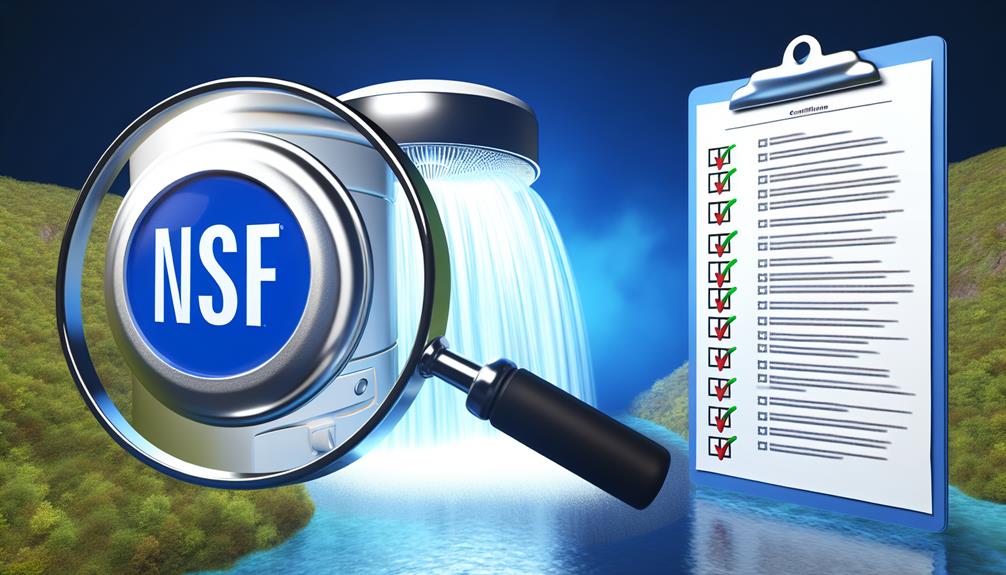
Ensure your water purifier meets industry standards by checking for certifications from recognized authorities. This step is crucial in verifying the filtering accuracy of your system. Certification agencies provide independent assessments to ensure that water purifiers perform according to specific health and safety standards.
When you're examining water purifiers, focus on the details provided by these agencies. They assess a range of factors, including the removal of contaminants, structural integrity, and the overall efficacy of the water filtration system. These certifications are your guarantee that the purifier will deliver clean, safe water.
Here's a condensed guide to help you understand key certifications:
| Certification | Description |
|---|---|
| NSF/ANSI 42 | Confirms reduction of aesthetic impurities, such as chlorine and taste/odor. |
| NSF/ANSI 53 | Indicates reduction of health-related contaminants, including lead and cryptosporidium. |
| NSF/ANSI 58 | Specific to reverse osmosis systems, verifying the reduction of dissolved solids. |
Each of these standards represents a layer of assurance. The technical criteria behind them are rigorous, ensuring that a certified water purifier is reliable and effective. Always check for these certifications to make an informed decision, and don't hesitate to contact the agencies for the latest information on standards and compliance.
Conclusion
In conclusion, you've navigated the complex landscape of water purifiers with precision.
By assessing your water quality needs, grasping various filtration technologies, comparing purifier capacities, scrutinizing maintenance demands, and verifying certification standards, you're now poised to make an informed decision.
Remember, the perfect purifier isn't just about clean water—it's about the right fit for your specific requirements.
Choose wisely, and you'll ensure safety and efficiency in water purification for years to come.
